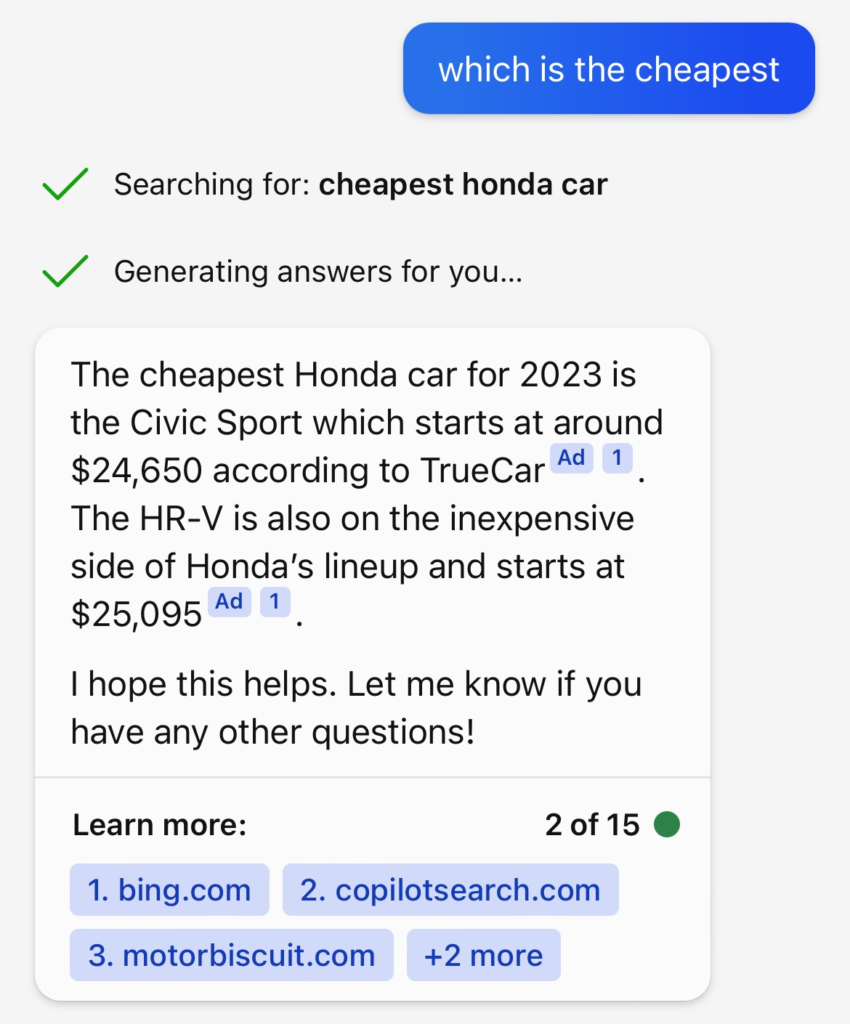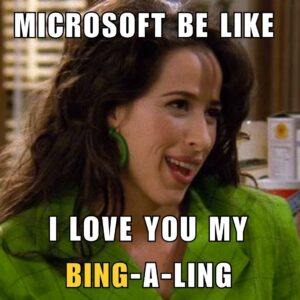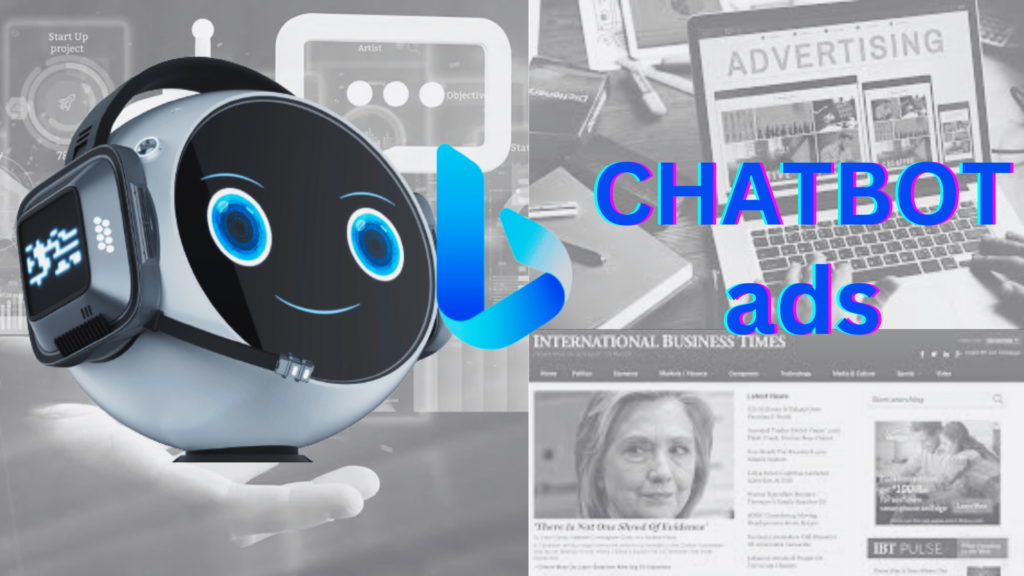This article is meant for you if:
~ You’re a new-age marketer reading about the latest strategies
~ You’re invested in the impact of artificial intelligence on the world
~ You’re an advertiser looking to leverage new opportunities for your brand(s)
~ You consider Microsoft to be competition & are trying to keep up with its maneuvers
~ You’re in love with me (please)
Here’s a quick overview of the article:
The following unwindr article talks about the future of advertising on AI-powered chatbots like Microsoft Bing and Google Bard. What does this mean for publishers, advertisers, and users like you and me? Read on to find out!
~ I set some context by describing the status quo of (digital) marketing
~ I get into Microsoft’s big announcement
~ A real-life glimpse into chatbot ads
~ I get into the pros and cons of chatbot advertising
~ I leave you with some thoughts on the future of advertising

Table of Contents
Context: The status quo of Digital Marketing
If you are a digital marketer in today’s hustling and bustling world, there is a high possibility that you are already crammed with an overload of work.
You know the drill: Google ads, Facebook ads, social media marketing, content strategy, content creation, search engine optimization, voice search optimization, video search optimization, analytics & insights across all platforms.
With artificial intelligence and generative chatbots coming into the picture, there’s an influx of so many new concepts and skills to keep up with.
Like Joe from LinkedIn (with 127 followers) says: AI is going to steal your job, your house, your spouse, your kids, your grandma, your grandma’s wheelchair, and more if you don’t learn the ground-breaking art of prompt engineering within the next seventeen seconds… /s
As if all of this wasn’t enough, the world of advertising is once again about to witness a breakthrough led by another technological advancement.

Microsoft’s Big Announcement: Advertising on AI-powered chatbots.
In February 2023, after Open AI’s ChatGPT had taken the world by storm, Microsoft introduced its very own generative chatbot, Microsoft Bing. While it was initially available only to a select group of users, anybody can access Bing now.
These chatbots (and more) have gained massive popularity over the last few months, primarily because of their iterative nature of answering (very) specific questions. Several businesses have integrated this artificial intelligence technology into their customer service processes because of the speed and precision with which the chatbots are able to respond to customer queries.
In a blog post dated 29th March, Microsoft announced that more than 100 million people actively use Bing on a daily basis.
With so many daily active users, Microsoft said that they were exploring the idea of placing ads in the Bing chat – where there’s a crowd, there’s an opportunity for advertising.
*Drumroll*
On 8th May, in another blog, Microsoft announced ‘a new solution to monetise AI-powered chat experiences’. Through Microsoft’s API (software), publishers, apps, and online services will be able to select ad formats that align with their unique requirements.
In simpler words, if a company wishes to publish ads with Bing, it will be able to sign up with Microsoft’s advertising services. The ads will then show up in the Bing chat when users search using relevant keywords (much like Google search).
Apart from this, Microsoft also wants to share a part of the revenue generated with content publishers (like unwindr, for example) that drive traffic on Bing. This is because my content might show up in the Bing chat and users may benefit from it. So it’s only fair that I’m given my share of the revenue that Microsoft is making.
A Glimpse into the Future
One user took to Twitter to share a glimpse of one of the first ads spotted on Bing:

But something tells me this is just the beginning. The ads right now look way too minimalistic for the day & age we live in. And that means a compromise on revenue. Let’s be real, we’re more … capitalistic than that.
Microsoft mentioned that publishers will be in control of how users experience these ads. So I’m guessing that means they will have the freedom to choose the size, placement, frequency, etc. of the ads that appear in their chat.
I have a feeling the ads will be similar to how advertisements work on websites. Something along the lines of this:

Of course, we’ll have to wait and watch how this translates to a chatbot like Bing, ChatGPT, or even Google’s newly launched Bard.
Additionally, Microsoft has mentioned that the API can serve ads on chat platforms from Microsoft or other companies. This statement seems a bit ambiguous too, and we’ll have to see how things play out. But if I had to take a guess, I’d say that businesses using ChatGPT’s API might also be able to share ads in their chats using Microsoft’s advertising services.
I’d like to pause here for a moment. Although Google has just entered the space, we’re all aware of its prowess as a search engine. And most of Google’s revenue comes from advertising. So it’s fairly safe to assume that Google will want to capitalise on chatbot advertising too with its recently launched Google Bard. And when that happens… advertising will truly change.
Final Thoughts
This whole new vertical of AI chatbot advertising obviously has its own pros and cons, so let’s weigh them out:
| Pros | Cons |
| As a publisher, chatbot advertising presents the opportunity for an additional stream of income. | As a publisher, the pain of adhering to the guidelines of yet another platform might be something you will have to deal with. |
| The flexible format of ads may also allow publishers to get creative and rethink their consumer journey. | As an advertiser, you will probably have to look into chatbot search optimization anytime now. |
| As an advertiser, you’re presented with the opportunity of a novel method of reaching your users. | With the advent of yet another mainstream, paid destination for advertising, the competition is bound to breed pressure. |
| Since queries with AI chatbots can get excessively specific, you might be able to capitalize on the hyper-personalization aspect and reach your targetted niche. | From the point of view of a user, we will be bombarded with more ads, as if the user experience isn’t compromised enough. |
| As a user, once in a blue moon, we might just end up stumbling upon the perfect product/service we were looking for through our chats with the AI bot. | Search results on chatbots will become sus as they have on Google. It will likely become tough to trust the content become so much of it would be sponsored. |
Usually, there’s a calm before the storm. But in light of the rapid advancements in the tech space, we are already in the middle of a storm and are approaching another bigger one.
Whenever there’s mass (digital) advertising involved, ad providers tend to follow a similar Freemium pattern:
1) Free model with little to no ads (beta stage)
2) Free model with an excessive amount of ads
3) Premium model that’s ad-free
It’s not unlikely that we could move towards the freemium model if the ads become overwhelming and cause too much disruption in the user experience. Furthermore, It will be interesting to see how ad-blocking platforms try and capitalise on this scenario.
Lastly, Google and Microsoft already have established (and flourishing) advertising businesses. On the other hand, their strong competitor, Open AI doesn’t do ads (correct me if I’m wrong). So it will also be interesting to see how ChatGPT responds to this advancement. Will it end up becoming the premium version of an AI chatbot without any ads?
I will try to keep you updated as and when I get the answers to any of the questions I’ve asked throughout this blog post. So stay tuned, I guess?
I had to insert this somewhere, so here goes nothing:

Sorry. Until next time. Tiddles out!

